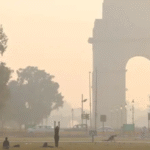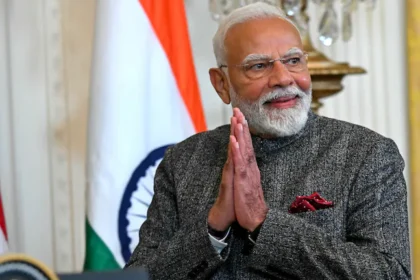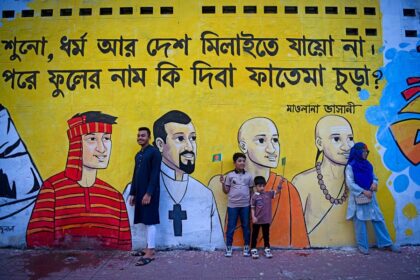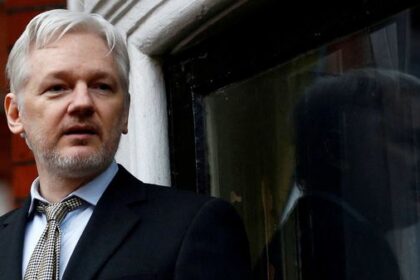Karnataka’s Fake News Law Threatens Free Speech Under the Guise of Regulation
When the draft of Karnataka’s Misinformation and Fake News (Prohibition) Bill, 2025 quietly surfaced online last week, it immediately exposed the fault lines in India’s struggle with the perils of a digital age. While ostensibly framed as a bold plan to rein in rampant online disinformation, the details of the proposal deeply unsettled digital rights and civil liberty advocates. Behind the language of public interest lies a framework that risks criminalising speech, granting those in power unchecked authority to decide what is true and punishing those who disagree.
At first glance, the bill’s objectives appear hard to dispute. Its statement of objects and reasons recognises that India, with over 600 million active users, has become a fertile ground for misinformation. At The London Story, we have documented how doctored images, communal dog whistles, and outright lies, often circulated by politicians, right-wing influencers, and troll networks, have flooded online spaces, fuelling violence.
The consequences are tangible. During the India-Pakistan conflict in April-May 2025, coordinated disinformation campaigns erupted on both sides. A report by CSOH found that social media platforms, particularly X, Facebook, Instagram and YouTube, became battlegrounds for virality, where AI-generated fabrications and false war narratives shaped public perception and our report ‘Escalate‘ traces how this digital propaganda became a catalyst for real-world violence following the Pahalgam terror attack.
However, legislation that grants sweeping powers to criminalise speech without clear definitions, independent oversight, or meaningful safeguards risks turning a legitimate effort to combat disinformation into an instrument of repression.
Too Much, Too Vague, Too Dangerous
The bill begins by laying out an unusually broad definition of “fake news,” including misquotations, edited clips that alter context, and fabrications, potentially sweeping in AI-generated content. It then introduces an even wider category of “misinformation,” where a partially inaccurate statement made “knowingly or recklessly” becomes a criminal offence. While it excludes satire, opinion, or artistic expression, those protections hinge on how a “reasonable person” would interpret the content; an inherently subjective standard.
The penalties are significant: a minimum of two years and up to five years in prison for misinformation, plus fines. These are harsher than many existing provisions on defamation or incitement, raising concerns about proportionality.
Enforcement would lie with a new “Fake News on Social Media Regulatory Authority,” chaired by the Information Minister and staffed by legislators and government-appointed ‘social media representatives’. There is no inclusion of subject matter experts, fact checkers, lawyers, or civil society.
This authority would be empowered to label posts as false, order takedowns and block accounts. The potential for selective targeting of dissenting speech is significant when the same actors who are subject to scrutiny also retain the power to decide what qualifies as misinformation.
In Kunal Kamra v. Union of India, the Bombay high court recently warned against allowing the government to act as the final arbiter of truth online, emphasising the need for checks on executive power to protect the guarantee of free expression under Article 19(1)(a) and prevent censorship masquerading as factual correction. The Karnataka bill ignores that warning entirely.
Its scope is also disturbingly broad. The Authority is tasked not only with curbing fake news but also content deemed “anti-feminist,” obscene, unscientific, or disrespectful of “Sanatan” symbols. This term, left undefined in the draft, carries deep political weight.
While Sanatan Dharma has traditionally referred to core Hindu values, as noted by the Madras high court in Kishore Kumar v. P.K. Shekar Babu (2024), it is increasingly used by right-wing groups to assert Hindu nationalist ideologies. Our research has found that a substantial portion of violent Islamophobic content has originated from networks, influencers and vigilante groups using ‘Sanatani’ as a unifying label, including cow protection militias.
This raises serious questions about what qualifies as a “Sanatan symbol.” While Om or traditional deities may seem obvious, the definition could easily extend to the saffron flag or militant Hanuman imagery, symbols increasingly tied to Hindutva pride. The bill offers no clarity, leaving satire, critique, or analysis of such symbols vulnerable to criminalisation. It risks shielding not just religious belief but majoritarian ideology from scrutiny, blurring the line between faith and majoritarian assertion.
The bill’s bail provisions compound the risk. If opposed by the Special Public Prosecutor, it requires the judge to be satisfied of the accused’s innocence, reversing the presumption of innocence and making prolonged pre-trial detention likely. As with many judicial processes in India, the process becomes the punishment, with a possibility of legal harassment and reputational damage, all before any guilt is proven.
This vagueness is not a trivial flaw. As the Supreme Court warned in Shreya Singhal v. Union of India nearly a decade ago, laws that rely on broad and subjective categories become tools to chill legitimate expression. The result is a climate of self-censorship, where critical views and satire are not shared due to fear that a stray complaint could trigger arrest.
International disinformation regimes
Supporters may point to Europe as proof that democracies can regulate disinformation, but successful international models are different, both in design and oversight.
France’s Law Against the Manipulation of Information targets deliberate disinformation during elections. It requires transparency in political ads and allows courts, not political appointees, to order takedowns. The European Union’s Digital Services Act (DSA), which came into force in 2024, takes a structural approach. It avoids criminalising misinformation altogether and does not attempt to define it in law. Instead, it requires platforms to assess and mitigate systemic risks from disinformation to democracy, public safety and health.
Rather than define “truth,” the DSA promotes accountability through transparency and systemic reform. Platforms must adjust algorithms, demote manipulative content, and label high-risk material, without policing individual speech. It also establishes a network of Trusted Flaggers: independent, expert entities designated by regulators, whose takedown notices must be prioritised.
These flaggers must meet strict standards of independence, accuracy and transparency. Crucially, none of Europe’s frameworks criminalises contested speech or hands governments unchecked power to decide what counts as truth. In India, where expression is already under siege, the consequences of poor legislation are amplified. According to the Status of Policing in India Report 2023, nearly two-thirds of respondents said they were afraid to express political opinions online. In BJP-ruled states, that fear is acute. If Karnataka enacts this bill, it risks joining jurisdictions where the right to speak survives in name, but is rationed in practice.
It’s true that India faces a disinformation crisis and platforms have often failed to stem the tide. But the solution cannot be to criminalise questionable posts or hand sweeping censorship powers to politicians. Public outcry has already prompted Karnataka’s IT Minister to concede that “a lot of misinformation” clouded the draft and to promise broader consultation. This is a crucial opportunity to rethink the approach. Instead of criminalisation, the state should invest in independent fact-checking and impose proportionate obligations on platforms to address demonstrable harms. Any regulatory body must be politically independent, transparent, and offer clear avenues for appeal.
Ultimately, the fight against disinformation must empower citizens and not police them. If Karnataka is serious about defending democracy, it must scrap this bill and build a model that protects both public safety and the right to think, question and speak without fear.
Also Read: Air India Plane Crash: Pilots’ Body Alleges AAIB Report Shows Bias, Demands Fair Fact-Based Inquiry







